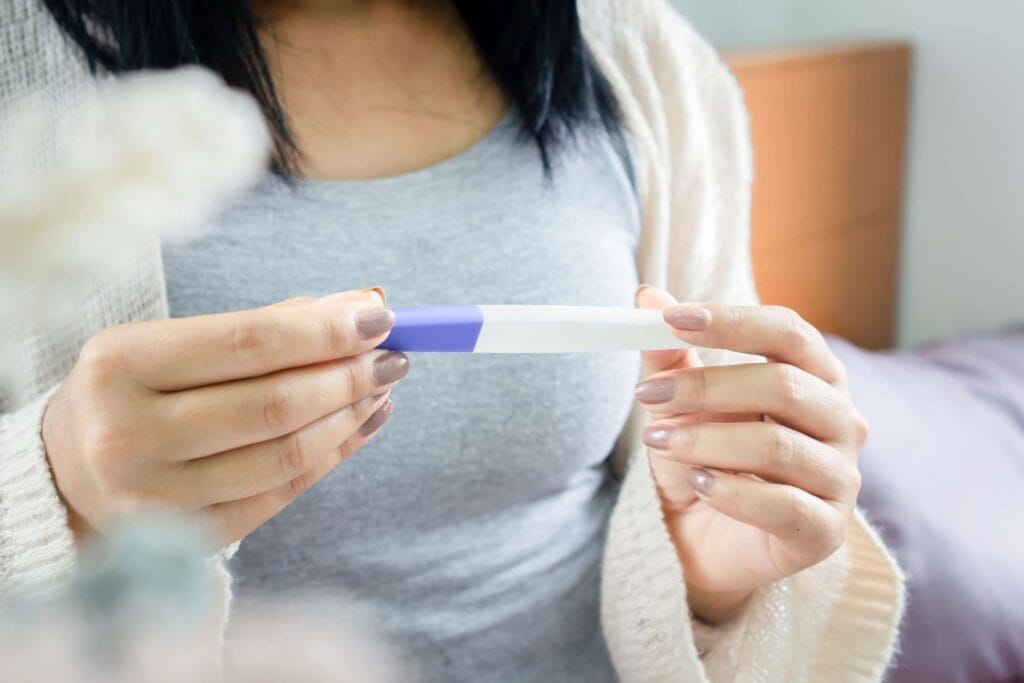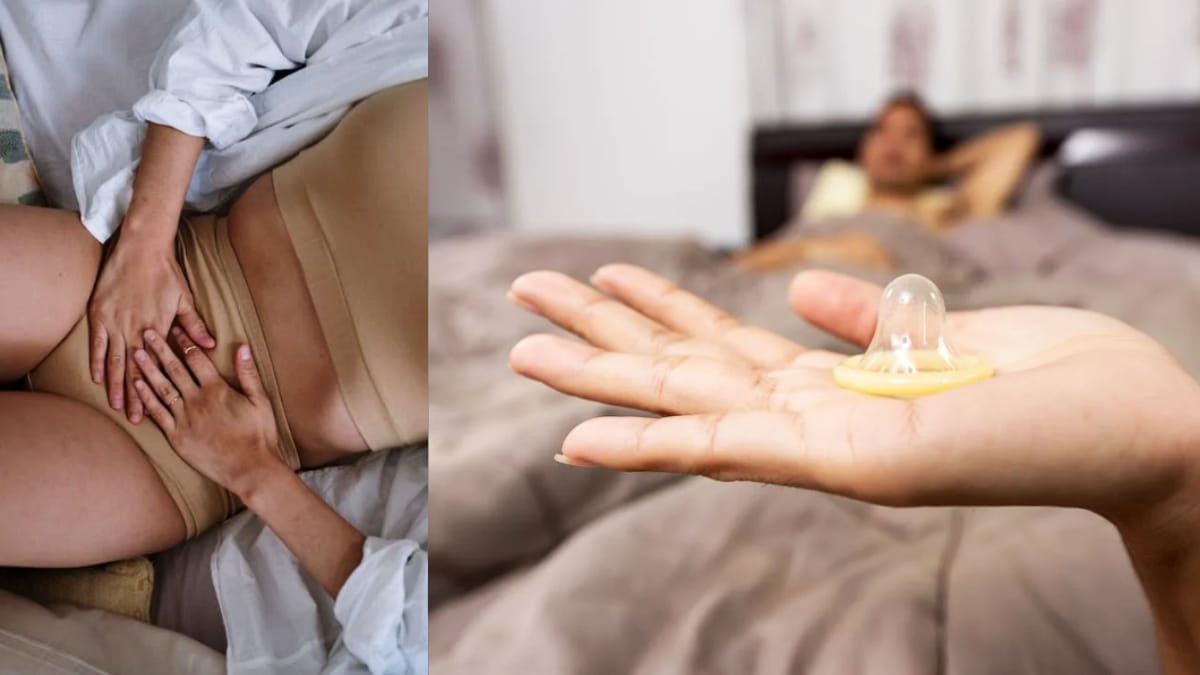
Can you get pregnant by having sex without a condom during your period?
How soon after your period can you get pregnant?
Sperm can live inside your uterus for up to 5 days after having penis-in-vagina sex, and pregnancy can only occur if there is sperm in your uterus or fallopian tubes when you ovulate.
For many people, ovulation occurs around day 14 of your cycle. However, having penis-in-vagina sex without a condom or another barrier method during your period or outside your expected fertile window isn’t a guarantee that you won’t get pregnant.
Can you get pregnant during your period?
For those with a shorter cycle — the average is 28 to 30 days — there’s still a possibility pregnancy could occur if you have penis-in-vagina sex during your period.
For example, if you have penis-in-vagina sex toward the end of your period and you ovulate early, you can conceive. Using birth control, condoms, or another barrier method is typically the best way to prevent pregnancy.
How do ovulation and pregnancy work?
Ovulation occurs when an ovary releases a mature egg. About once a month, an egg matures, and the ovary releases it into the fallopian tube. The egg then heads toward sperm in the fallopian tubes and uterus.
Before arriving to meet the egg, the sperm must travel from the vagina, through the cervix of the uterus, into the uterine cavity, and the fallopian tube to fertilize the egg.
It can take about 45 minutes to 12 hours for this to occur. Sperm has a lifespan of about 2 to 5 days after entering the vagina upon ejaculation.
An egg is viable between 12 and 24 hours after it leaves the ovary. Sperm can stay alive for up to 5 days after having penis-in-vagina. Implantation of an egg, which happens after fertilization, usually takes place 6 to 12 days after ovulation.
You can get pregnant immediately after your period. That can happen if you have penis-in-vagina sex toward the end of your cycle and are approaching your fertile window. On the other hand, the probability of getting pregnant right before your period is low.
If you track ovulation and wait 36 to 48 hours after ovulating, your chance of conceiving is low. The probability of pregnancy decreases the further in the month you are from ovulation.
If pregnancy doesn’t occur, the uterine lining will shed and your menstrual period will start.

Tracking your fertile window
Tracking your fertile window is a way to determine your “optimal” time to get pregnant. It can also help prevent pregnancy if you aren’t trying to conceive. As a method of reliable birth control, it can take several months of recording your monthly cycle to figure out your fertile window.
How to track your fertile window
The following method will help you find out your fertile window.
- For 8 to 12 months, record the day you start your menstrual period and count the total number of days in that cycle. Note that the first full flow day of your menstrual period is day 1.
- Then write down the longest and shortest number of days from your monthly tracking.
- Find out the first day of your fertile window by subtracting 18 days from the length of your shortest cycle. For example, if your shortest cycle was 27 days, subtract 18 from 27, and write down day 9.
- Find out the last day of your fertile window by subtracting 11 from the length of the longest cycle. For example, if the longest cycle length was 30 days, you’d get day 19.
- The time between the shortest and longest day is your fertile window. In the above example, it would be between days 9 and 19. If you’re trying to avoid pregnancy, it’s important to avoid having penis-in-vagina sex without a condom or other barrier methods during those days.
How to use your fertile window as birth control
Ovulation will occur one day during your fertile window. The egg released is viable for 12 to 24 hours. That doesn’t mean you can get pregnant every day during this window. But if you’re trying to prevent pregnancy, it’s a good idea to abstain from penis-in-vagina sex without a condom or another barrier method during the entire fertile window.
Tools for tracking your cycle
To track your cycle, mark the first day of your menstrual cycle on the calendar or in your day planner. Do this over several months. You can also use a fertility app to help you keep track.
Is the fertile method effective?
If you have very consistent cycles, knowing your fertile window can help prevent pregnancy. But keep in mind that your cycle days can still change each month. Factors like stress, diet, or heavy exercise can affect the number of days in your cycle. The day of ovulation can also change every month.
Tracking your ovulation is usually a more effective way to help you get pregnant. If you’re trying to avoid pregnancy, talk with your doctor about the best birth control for you.
Other fertility awareness methods
Tracking ovulation is another effective fertility awareness method. Common ways to track ovulation include:
- Tracking your basal body temperature
- Checking cervical mucus
- Using ovulation predictor kits
Basal body temperature
Your basal body temperature is your temperature when you’re fully at rest. It rises slightly following ovulation. To track your basal body temperature, you’ll need a special basal temperature thermometer.
Using the thermometer, take and record your temperature when you first wake up in the morning before getting out of bed. You can chart it on paper or an app. Your temperature will rise slightly, about 0.5°F (0.3°C), during ovulation.
Because this method helps you understand when ovulation occurs, it can work better for preventing pregnancy by waiting to have penis-in-vagina sex without a condom or another barrier method until a couple of days after the spike in temperature.
Cervical mucus
Some people notice an increase in cervical mucus close to ovulation. This is because estrogen levels surge during this time, causing your cervix to produce more mucus.
This mucus will be clear and stretchy. The consistency will be similar to egg whites. Your body may be most fertile on days when you notice an increase in cervical mucus.
Ovulation predictor kits
If you’re trying to get pregnant, you may want to purchase an ovulation predictor kit. They test your urine for a surge in the luteinizing hormone (LH).
LH surges 24 to 48 hours before ovulation. Avoid having penis-in-vagina sex without a condom or another barrier method at this time if you’re trying to prevent pregnancy. But since sperm can survive in the uterus for up to 5 days, you may want to avoid penis-in-vagina sex without a condom or another barrier method for the 5 days before this surge, which can be harder to predict ahead of time.
Other forms of contraception
There are several options for effective forms of contraception. Popular choices include:
- Birth control pills
- Intrauterine devices
- Contraceptive injections such as Depo-Provera
These options can be more than 99 percent effective against pregnancy if you follow the instructions carefully.
Condoms are another effective form of birth control and also protect against sexually transmitted infections.





